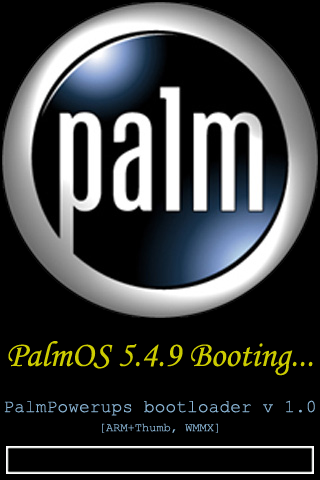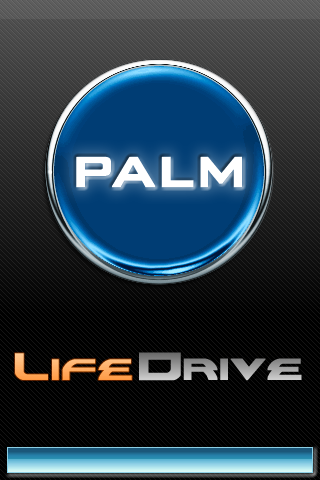
| PowerDrive |
FAQ:| Q: | My device's MD is dead already, can I somehow use a CF card without one? |
| A: | It is not so simple since you need a ROM match to use a different card. However we at PlmPowerups can gladly send you a pre-formatted bootable 4GB card or microdrive that you can use to boot your device. The prices are affordable. Email dmitrygr@gmail.com for more information. |
| Q: | Is this safe? |
| A: | Yes, as long as you do not use metal tools and follow directions your device hardware will not be harmed |
| Q: | What's the biggest card I can use? |
| A: | 32GB works, nobody's tested 64GB yet |
UPDATE DESCRIPTION:- If something goes wrong, a recovery can be done using a specially-formatted SD card
- A custom text can be shown at each boot
- A password can be required for boot. Device will refuse to boot unless it is provided
NEWEST VERSION: Application updated to version 425. To check your version, boot your device while holding the [ROTATE] button. On screen the line of text that says "Current version is ..." will tell you your current version.PowerDrive is an application for PalmOne LifeDrive devices that will allow you to repartition your device to have a bigger RAM area or a bigger internal drive area.
It will also allow use of ANY other CF card instead of the original microdrive for size and speed improvements, naturally. To use this application, make sure your LifeDrive has LifeDrive v2.0 update from Palm, Inc. installed. To download it or check that you have it, see here => [
LINK] <= The use of PowerDrive is simple: You'll need an SD card with at least 32MB free space on it and the application. If you'll be replacing the internal drive, you'll of course need a new CF card. Any card over 64MB will work. To operate the program install and just run it. The application will update your device's ROM. This is normal and expected. PalmOne did not allow the device to boot off other cards, and this update allows this. After this the application will backup the needed parts of PalmOS to the SD card and ask you to insert the new CF card. If you will not be installing a new card, press cancel, else carefully remove the microdrive and insert the new CF card in its place. Be sure to get all the pins in. Now press OK on the screen. You will be told the size of the new card and told the size the OS will need and asked for how much RAM you want. Internal drive will take up all the remaining space. Be careful here. Make sure to have at least 16MB RAM and 16MB internal drive. The application will continue. After the end it will ask you to reset the device, do so using your stylus in the hole on the bottom-right of the device.Special topics: You can customize the boot process of your device using this application. You may customize the boot image, a small amount of text to be shown, and a password to require when booting. This is done using a special configuration file, which must be present on you SD card at the time PowerDrive is run. it must be called "boot.ini" and below are example contents of this file:
boot_bmp = /boot.bmp
text_color = 999999
back_color = 000000
progress_color = 505050
boot_text = This is my boot message
boot_password = UDUDLRLR |
The first line determines the boot image to be shown.The next three determine the colors the system will use when booting for the progress bar, the text, and the text backgroundThe next line sets the text to show at bootupAnd the last line sets the password.All or any of these lines may be missing, and default information will be substituted for them if they are not found. By default the boot image is unchanged, there is no text shown at boot, and no password is required.If boot_text is defined in the configuration file, it will be saved, and shown at each boot.If boot_password is defined, the password will be required at each boot. The password is made of 5-way button presses except the center button. It must have at least one [DOWN] button press in it. When entering you must press [CENTER] to accept password, and the [ROTATE] key is used to erase the last entered key. Make sure to not forget this password as then you will be unable to boot your device. In the configuration file anything reasonable is acceptable in this field. For example U,D,L,R can stand for [UP], [DOWN], [LEFT], [RIGHT]. Also accepted, with obvious meanings are the following symbols: u, d, l, r, ^, v, V, >, }, {, <.Now about the colors: Text is the color of the text that the bootloader will use to show notifications in case of errors. Back is the background of said text. Pick these two to contrast well. The progress color is the color of the progressbar that the device uses when booting. The lines that determine colors use the standard hexadecimal color format, which you can read about
here.For a custom boot image you'll need to prepare a boot image. It has to be 320x480 in size and be in BMP format using 24 bits-per-pixel for color. For this example i will use the name "boot.bmp". Below you can see a few example bootscreens. Feel free to right-click one and save it and use it.
There are more bootscreens available for download here: =>[
LINK] <=


Tested cards with this release include:
- 32GB
- Adata Speedy 32GB
- Transcend 32GB 133x (early cards work, manufactured after june 2008 do not)
- ADATA 32GB
- 16GB
- Sandisk 16GB Extreme III
- Transcend 16GB 133x
- Adata Speedy 16GB
- TRANSCEND 16GB Ultra DMA Extreme Speed 300x with SLC Flash (TS16GCF300).
- 8GB
- Sandisk 8GB Extreme III
- Adata Speedy 8GB
- Samsung Generic Blue Label 8GB
- Kingston 8GB 133x
- 4GB
- Sandisk 4GB Extreme III
- Sandisk 4GB Ultra II
- Sandisk 4GB
- DaneElec 4GB
- Hitachi Microdrive 4GB
- 1GB
The following cards are reported to have problems and are to be avoided:
Others will work too. If you have another card that works, please email its model and size to dmitrygr@gmail.com so that it can be posted here too.Warnings:
- Keep an image of the original disk on your PC. It can be used for recovery in case of a problem
- When replacing the CF card, try not to use any metallic tools while the device is on.
- Do not set RAM to less than 16MB or leave less than 16MB for internal drive since this will greatly confuse PalmOS and it will not boot
- PalmOS has a bug by which it will not report full capacity and free space of volumes over 4GB. This is normal, and you can still use the full capacity.
- While it is possible to repartition the original Microdrive, this is not recommended since keeping it in its original state provides you with a great way to recover any problems. If you do wish to do so, however, it is entirely possible.
- Having more than 4GB of ram will cause problems with the OS and is not recommended
- Having more than 1.5GB of RAM will cause slower boot and operation since the OS will use FAT32 instead for the faster FAT16 for RAM.
- The little ribbon that goes from the CF to the motherboard is very fragile and breaks easily. Be careful with it.
- Do not use LifeDrive manager with drives over 4GB, it is not equipped to handle this. Use drivemode.